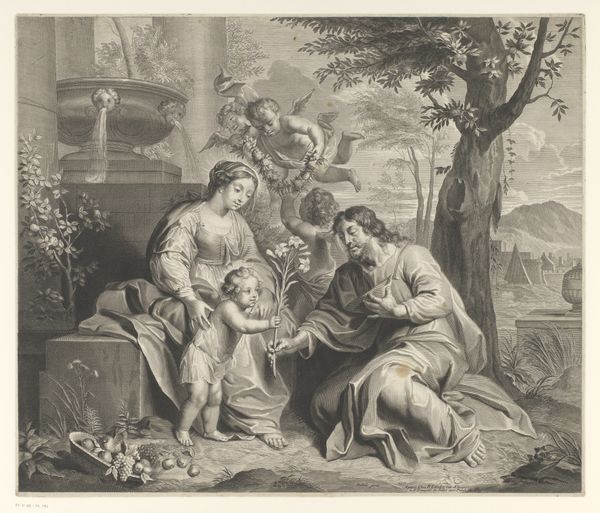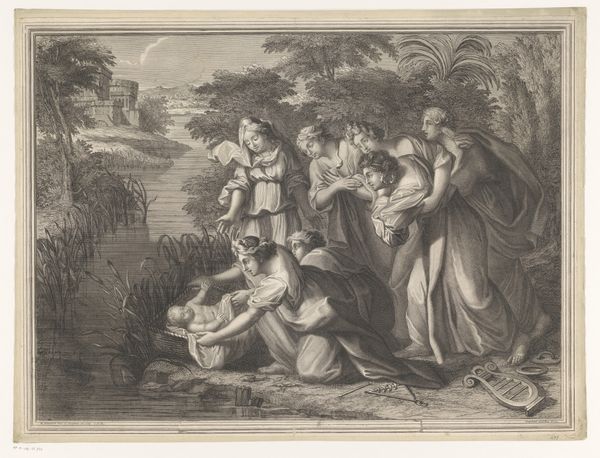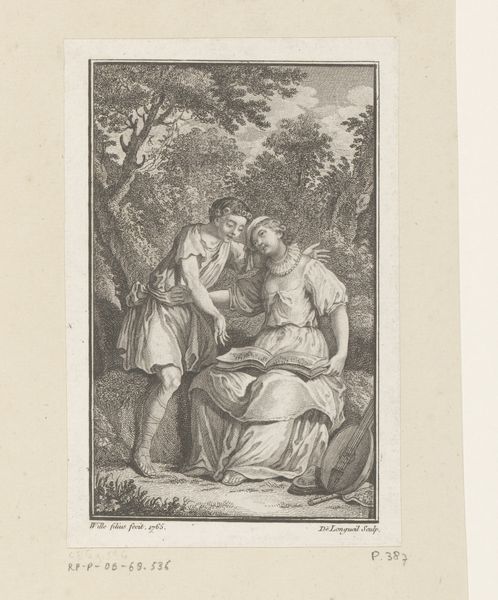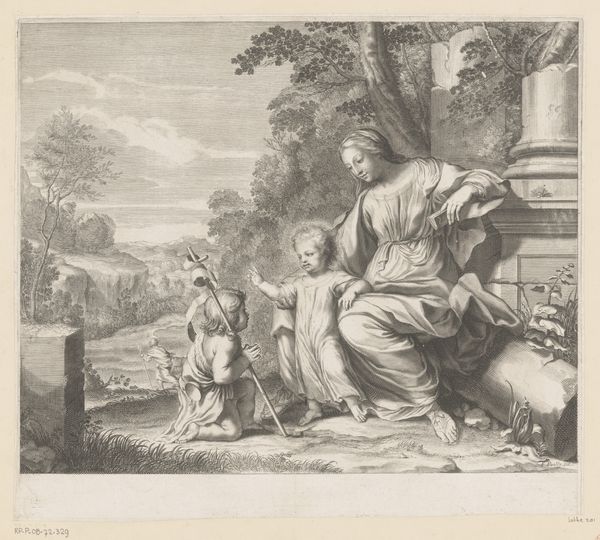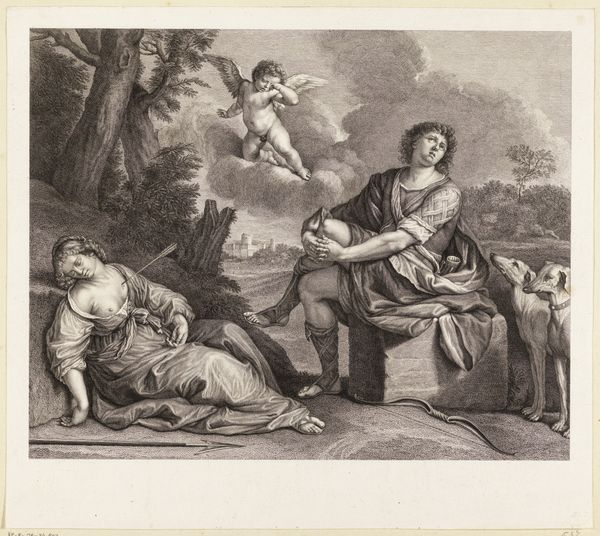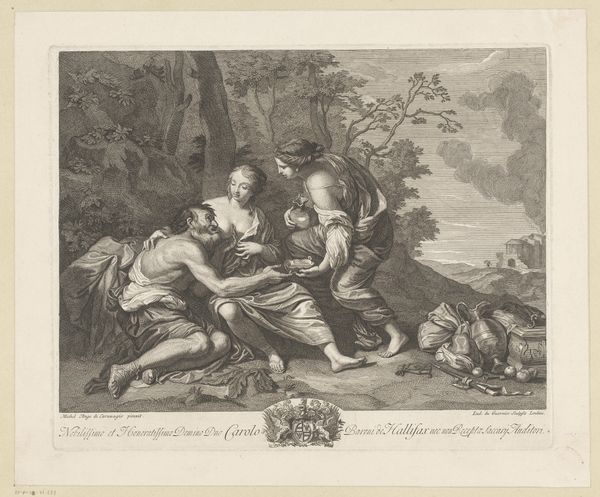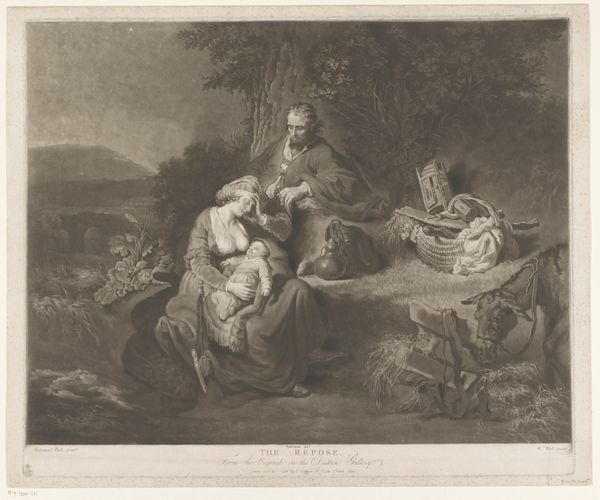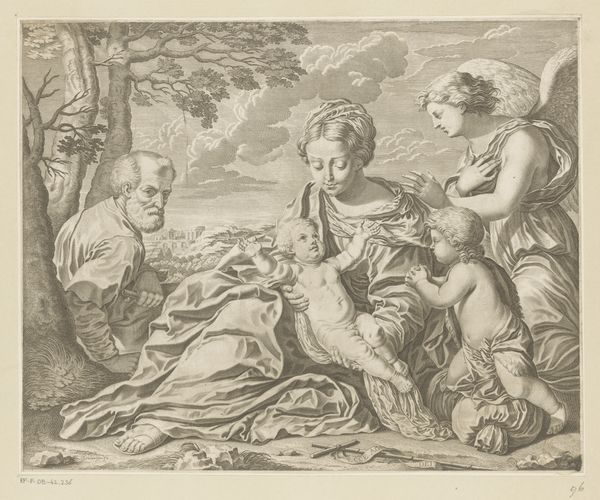
engraving
#
baroque
#
landscape
#
figuration
#
line
#
history-painting
#
engraving
Dimensions: height 456 mm, width 565 mm
Copyright: Rijks Museum: Open Domain
Curator: Let’s turn our attention to an engraving from the Rijksmuseum’s collection entitled “Heilige Familie met Johannes en Elisabeth”, or “The Holy Family with John and Elizabeth”. It’s dated sometime between 1600 and 1666, and the artist is, alas, anonymous. Editor: Immediately, what strikes me is how wonderfully human they appear, amidst this very structured landscape. Not floating on clouds but sitting amongst the trees with a sense of casual dignity. Curator: Yes, it’s a masterful combination of the formal and the informal, typical of baroque history painting. The work situates the figures, typically revered as sacred, within an accessible, almost pastoral setting. How does the depiction here either reinforce or challenge contemporary understandings of familial piety and maternal virtue, do you think? Editor: It’s interesting... Joseph, back there in the shadows is dutifully pouring over scripture, while Mary appears completely enthralled by her son. Her eyes are lifted as if she can envision a halo just above his baby curls. This engraving almost invites us to consider Mary not just as mother of the divine, but also, well, as simply, divine herself. It’s powerful stuff, symbolically speaking, to include Saint Elizabeth and her son, John the Baptist. The work becomes a celebration of motherhood across generations. It makes you wonder, who would have consumed and reflected on works like these? What was family life like in the homes or halls where a work like this may have been found? Curator: Precisely. The composition here draws heavily from the established visual rhetoric of religious authority, and then places this into a conversation about human relationships. I think you’ve touched on an important point about the consumers, though. Engravings made art more accessible to a wider audience beyond the aristocracy, spreading visual culture and fostering a shared set of ideals around faith and family, and especially in that era the role of mothers, specifically. Editor: Right. Even now, stepping back and letting my eyes blur, the composition is simply beautiful. Light dances across the family unit but darkens the landscape behind it and adds weight. I'd like to think the engraver saw this compositionally and thought, yes, this has the sort of complexity that might allow someone to stand and dream about it in a public space for centuries. Curator: It is compelling, the way in which it embodies both the sacred and the familiar, and prompts questions about artistic creation as an enduring form of cultural dialogue. Editor: Agreed. What a moment in ink.
Comments
No comments
Be the first to comment and join the conversation on the ultimate creative platform.
